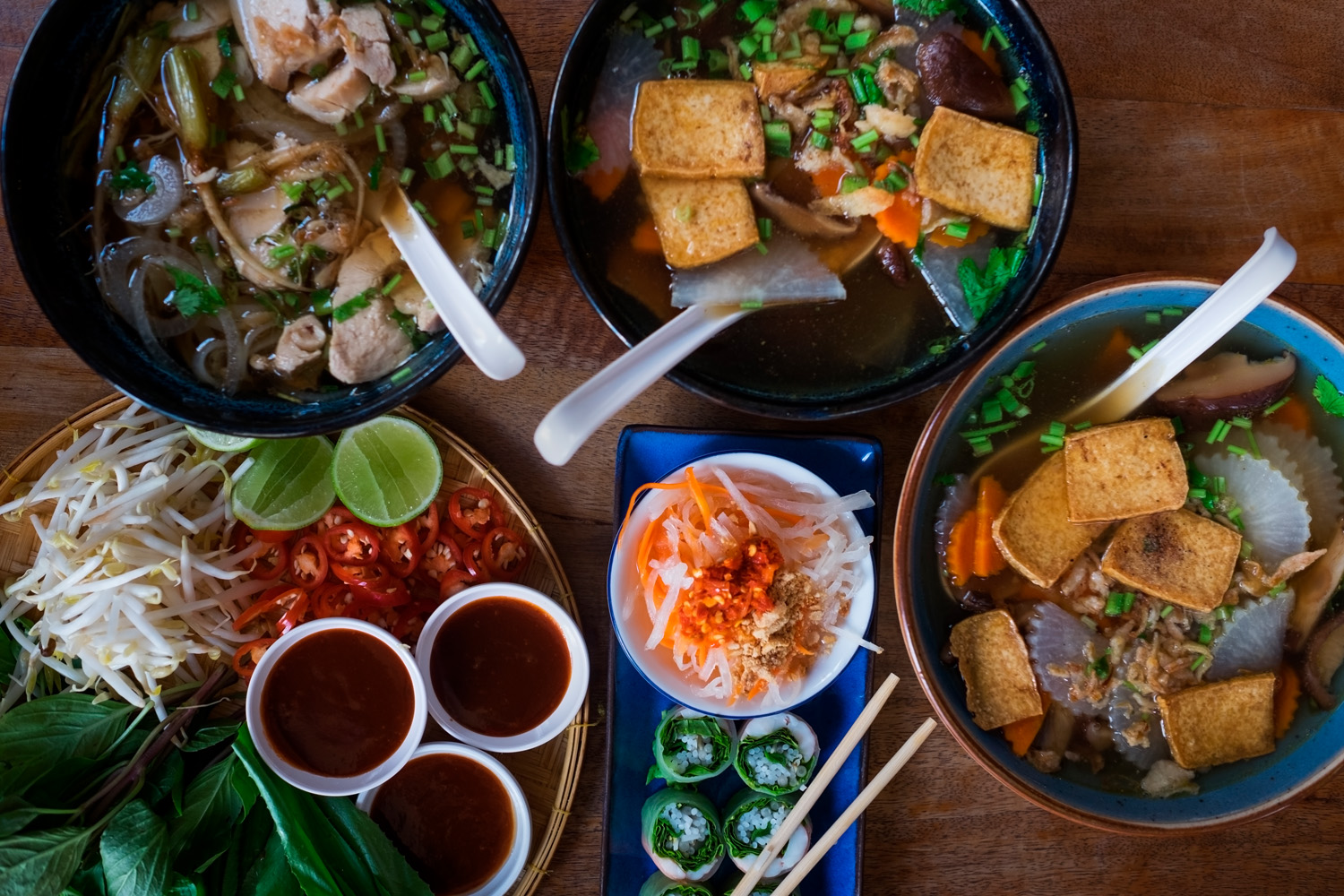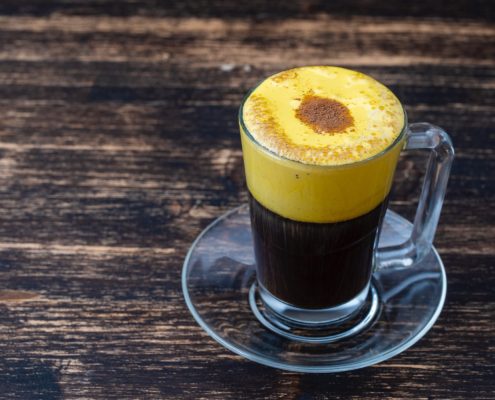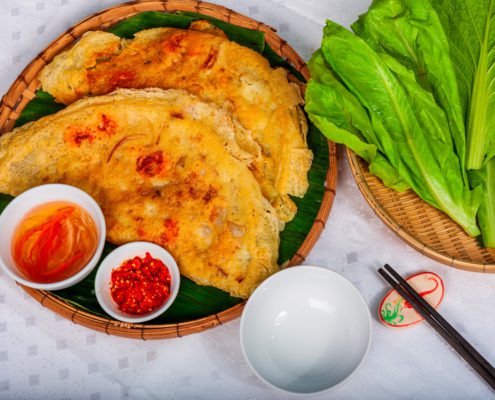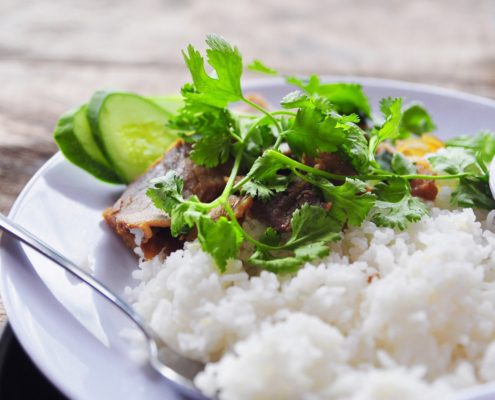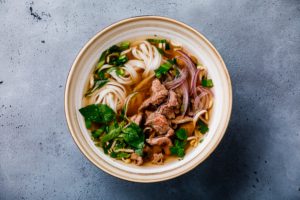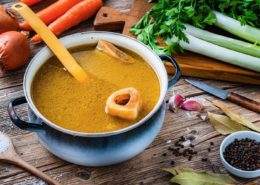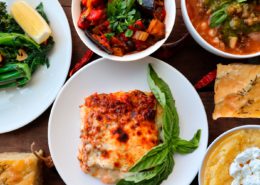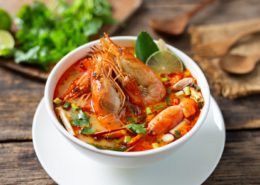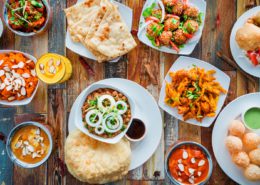Vietnamese Cuisine
Traditional Vietnamese Food
Vietnamese cuisine is like listening to classical music, a genre that exudes a sense of balance and elegance. Similar to how classical music focuses on simple rhythms, Vietnamese cuisine is known for its simplicity and absence of “heavy” ingredients like oil and dairy.
Traditional Vietnamese food is often described as light and aromatic, with an emphasis on the harmony between vegetables, herbs, and seasonings. While the flavors vary from region to region, they feature five fundamental tastes: sweet, salty, bitter, sour, and spicy.
Vietnam is also known for its agriculture. The cuisine reflects the country’s open lifestyle, and the ingredients used in most dishes are widely accessible: think local herbs, vegetables, and pantry staples like fish sauce.
The History of Vietnamese Food
Vietnam is located on the eastern edge of the Indochina Peninsula in Southeast Asia. This tropical and temperate country spans the coasts of the South China Sea — bordering China to the north and Laos and Cambodia to the west. The Sapa and Ha Giang mountain ranges of North Vietnam create a cooler climate, while the South boasts low-land plains and complex river networks well-suited for agriculture.
The geographical proximity to water sources and arable land has influenced Vietnamese cuisine and its use of fresh seafood and vegetables. The contrast between cold and hot and sour and sweet has a deep philosophy rooted in the balance between yin (cold ingredients) and yang (hot ingredients). This philosophy is intertwined with recipes, developing deep and balanced flavors across all of Vietnamese cooking.
Vietnam’s proximity to its Southeast Asian neighbors also led to mutual exchanges in ingredients and flavors. For example, Champa introduced coconut milk and curry, Malaysia and India shared their spices during trade, and the Chinese contributed noodles and cooking techniques. The French influence and European trade are also significant, as they brought about Vietnamese dishes like phở and bánh mì.
Sign up for Shef to have a taste of Vietnam delivered to your door.
Find Local Vietnamese Shefs & Meals
When searching for “vietnamese food near me”, you’ll find Shef delivers Vietnamese food in the following locations:
- Los Angeles
- San Francisco (Bay Area)
- Chicago
- New York City
- New Jersey
- Seattle
Find your local home-cooked Vietnamese dishes today!

